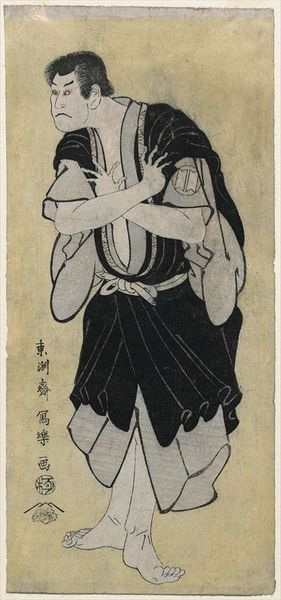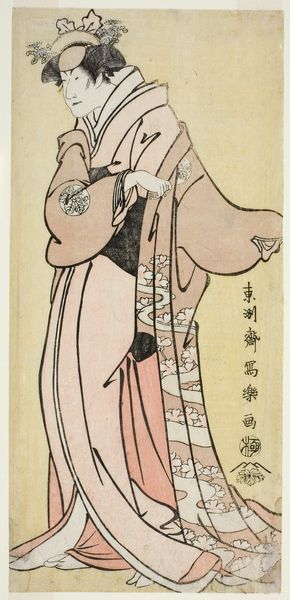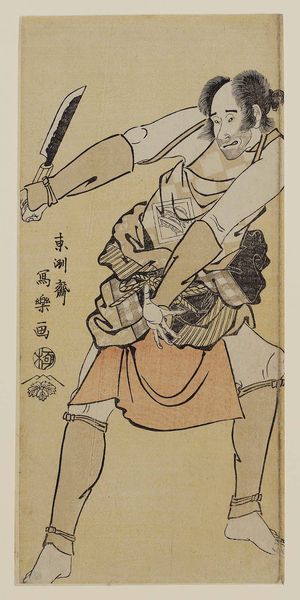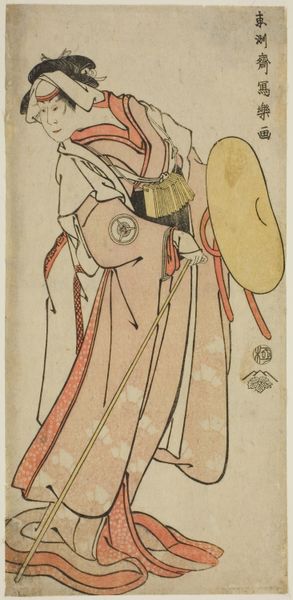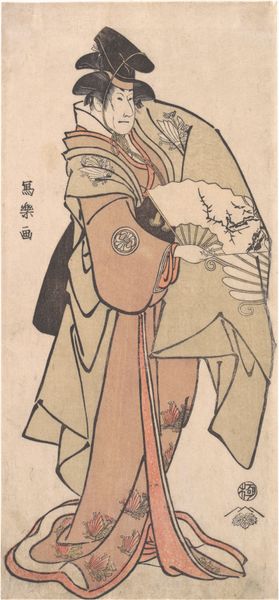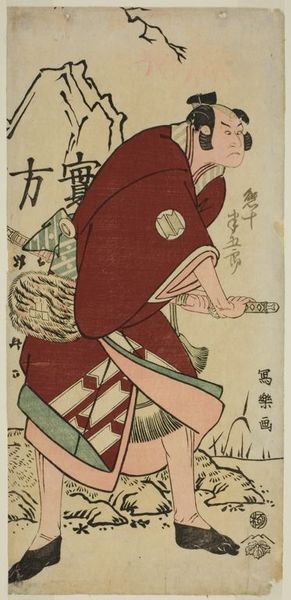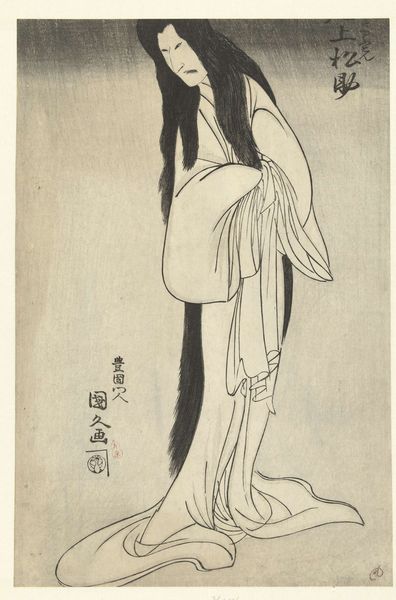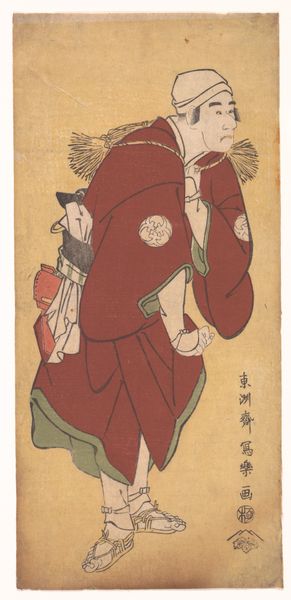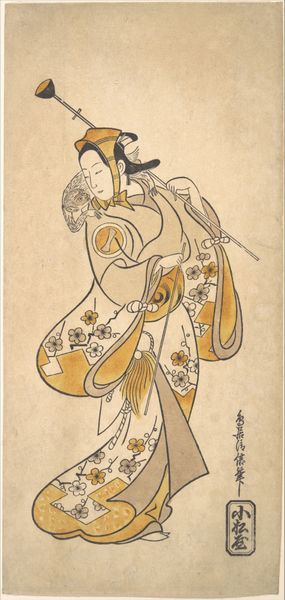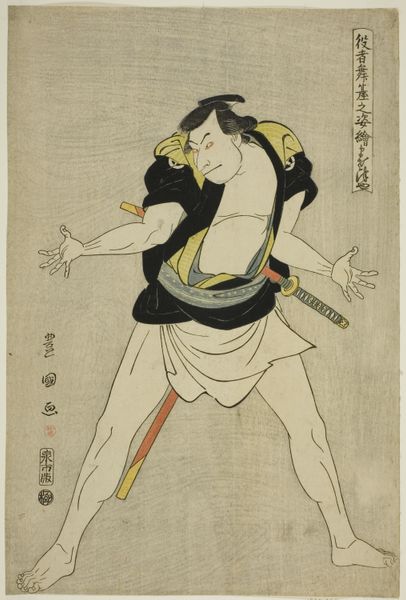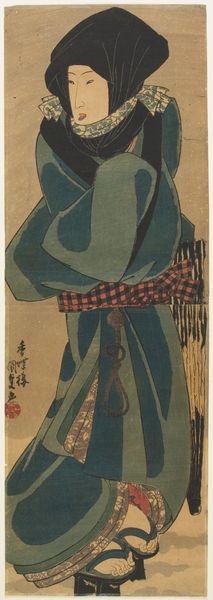
The Actor Sakata Hangoro III as Kosodate Kannonbo (Sandai-me Sakata Hangoro no Kosodate no Kannonbo) 1794
0:00
0:00
# print
#
caricature
#
asian-art
#
caricature
#
ukiyo-e
#
japan
Dimensions: 31.0 × 14.2 cm
Copyright: Public Domain
Curator: This intriguing woodblock print from 1794 is titled "The Actor Sakata Hangoro III as Kosodate Kannonbo," created by Tōshūsai Sharaku. Editor: Well, immediately I'm struck by the figure’s palpable tension. His crossed arms, that intense glare—it’s such an assertive, almost confrontational, stance for a character known for compassion. What’s the story here? Curator: The story lies within the layered social context of the late 18th century in Japan and its artistic conventions. This is a portrayal of a Kabuki actor in character, yes, but it’s also a shrewd caricature intended to simultaneously entertain and critique. The exaggerated features – the long face, the pinched mouth - amplify aspects of the actor’s stage persona for the viewing public. Editor: It’s fascinating how Sharaku disrupts traditional modes of representation. He emphasizes, and thus calls attention to, the constructedness of identity, challenging hierarchies. Look at how the solid blacks of the robe and the spare line-work converge, practically erasing details except those expressive hands and face. The materiality emphasizes the surface, almost like he's saying "this is not a window into the soul; it is crafted." Curator: Precisely. Also, considering the conditions in which this print would have been produced and consumed really tells a fuller story. The artist working with block cutters and printers under pressure in a competitive market, rapidly producing images that capitalize on the celebrity and current social fascinations. Editor: It prompts me to consider this from a performance studies lens, almost. How is Kabuki performance used to both uphold societal structures but also create possibilities for dissent, even liberation through artifice? Also, let's talk about Sharaku and their own ambiguous identity. It definitely speaks to power dynamics that circulate within the Japanese print industry at the time, particularly around social commentary. Curator: Agreed. These images acted almost like a form of public discourse, and one accessible to more than the upper classes, due to printmaking techniques. Editor: Absolutely. Considering artmaking as bound to economic networks, printmaking in the Edo period became central to democratizing images of those in positions of power and simultaneously blurring the lines between propaganda and artwork. Sharaku’s image underscores this very issue of representation. Curator: Looking closer at Sharaku's print reveals layers of cultural messaging that resonate today, prompting us to examine how actors are made and perceived, even the manufacturing of celebrity and how performance functions to shape identity, really. Editor: Absolutely. For me, it reinforces that nothing is ever purely innocent. Everything holds the charge of its making.
Comments
No comments
Be the first to comment and join the conversation on the ultimate creative platform.
